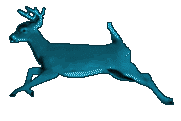John M. Picker: Victorian Soundscapes (2003)
Filed under book | Tags: · 1800s, acoustics, history of literature, listening, literature, music, noise, phonograph, recording, silence, sound, sound recording, united kingdom, voice

“Far from the hushed restraint we associate with the Victorians, their world pulsated with sound. This book shows how, in more ways than one, Victorians were hearing things. The representations close listeners left of their soundscapes offered new meanings for silence, music, noise, voice, and echo that constitute an important part of the Victorian legacy to us today. In chronicling the shift from Romantic to modern configurations of sound and voice, Picker draws upon literary and scientific works to recapture the sense of aural discovery figures such as Babbage, Helmholtz, Freud, Bell, and Edison shared with the likes of Dickens, George Eliot, Tennyson, Stoker, and Conrad.”
Publisher Oxford University Press, 2003
ISBN 0195151917, 9780195151916
220 pages
PDF, PDF (updated on 2017-3-2)
Comments (4)Michel Meulders: Helmholtz: From Enlightenment to Neuroscience (2001/2010)
Filed under book | Tags: · 1800s, biography, empiricism, enlightenment, history of science, music, neurophysiology, neuroscience, physiology, psychology, science, vision

“Although Hermann von Helmholtz was one of most remarkable figures of nineteenth-century science, he is little known outside his native Germany. Helmholtz (1821-1894) made significant contributions to the study of vision and perception and was also influential in the painting, music, and literature of the time; one of his major works analyzed tone in music. This book, the first in English to describe Helmholtz’s life and work in detail, describes his scientific studies, analyzes them in the context of the science and philosophy of the period—in particular the German Naturphilosophie—and gauges his influence on today’s neuroscience.
Helmholtz, trained by Johannes Müller, one of the best physiologists of his time, used a resolutely materialistic and empirical scientific method in his research. This puts him in the tradition of Kant and the English empirical philosophers and directly opposed to the idealists and naturalists who interpreted nature based on metaphysical presuppositions. Helmholtz’s research on color vision put him at odds with Goethe’s more romantic theorizing on the subject; but at the end of his life, Helmholtz honored Goethe’s contributions, acknowledging that artistic intuition could reveal truths about the human mind that are inaccessible to science.
Helmholtz’s work, eclipsed at the beginning of the twentieth century by new ideas in neurophysiology, has recently been rediscovered. We can now recognize in Helmholtz’s methods–which were based on his belief in the interconnectedness of physiology and psychology–the origins of neuroscience.”
Originally published as Helmholtz: Des lumières aux neurosciences, Odile Jacob, Paris, 2001
Translated and edited by Laurence Garey
Publisher MIT Press, 2010
ISBN 0262014483, 9780262014489
235 pages
PDF, PDF (updated on 2018-8-5)
Comments (2)Renzo Dubbini: Geography of the Gaze: Urban and Rural Vision in Early Modern Europe (1994/2002)
Filed under book | Tags: · 1600s, 1700s, 1800s, architecture, art history, cartography, diorama, image, landscape, mapping, panorama, topography, vision

Geography of the Gaze offers a new history and theory of how the way we look at things influences what we see. Focusing on Western Europe from the seventeenth to nineteenth centuries, Renzo Dubbini shows how developments in science, art, mapping, and visual epistemology affected the ways natural and artificial landscapes were perceived and portrayed.
He begins with the idea of the “view,” explaining its role in the invention of landscape painting and in the definition of landscape as a cultural space. Among other topics, Dubbini explores how the descriptive and pictorial techniques used in mariners’ charts, view-oriented atlases, military cartography, and garden design were linked to the proliferation of highly realistic paintings of landscapes and city scenes; how the “picturesque” system for defining and composing landscapes affected not just art but also archaeology and engineering; and how the everchanging modern cityscapes inspired new ways of seeing and representing the urban scene in Impressionist painting, photography, and stereoscopy. A marvelous history of viewing, Geography of the Gaze will interest everyone from scientists to artists.
Originally published as Geografie dello sguardo: Visione e paesaggio in età moderna, Giulio Einaudi, Torino, 1994
Translated by Lydia G. Cochrane
Publisher University of Chicago Press, 2002
ISBN 0226167372, 9780226167374
251 pages

